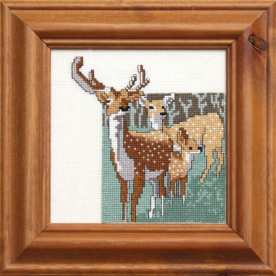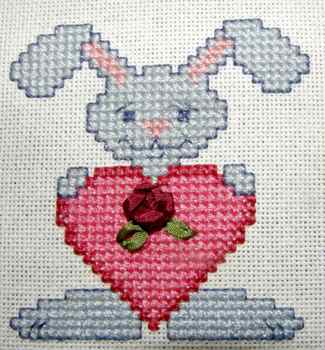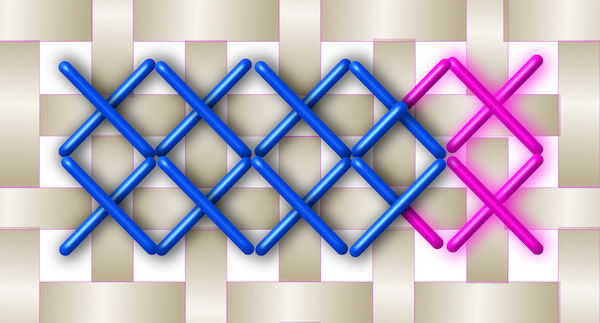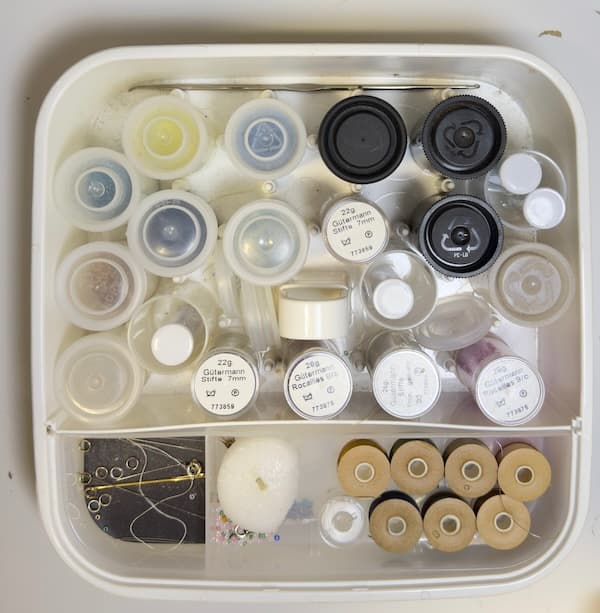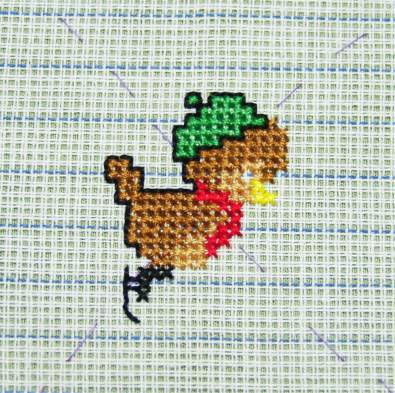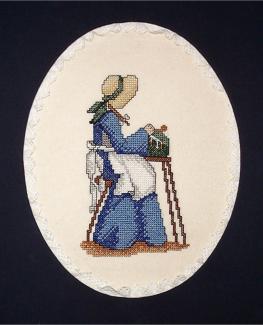- Home
- Cross Stitch
- Stain Removal
The Guide to Panic-Free Stain Removal for Needleworkers
Stain removal is something we don't want to have to do but however careful we are when stitching there are still occasions when accidents happen and our precious embroidery is at risk from stains of all types. If you know how to deal with them straight away, all is not lost.
The golden rule is to act quickly. You may want to print this page and keep it handy, just in case!
General tips for stain removal
- Try to soak up any excess liquid straight away.
- Scrape off any solid matter.
- Dab don't scrub - you could damage the fibres of the fabric
- Use a white cleaning cloth - a colored one could leave dye
- Test an inconspicuous area first
- Work from the back of the stain
- Work from the outside of the stain into the middle
Types of stain
Stains can generally be classified into one of five types:
- Food or protein stains
- Tannin stains
- Oil based stains
- Dye stains
- Combination stains
Store cupboard essentials for removing stains
We don't always have commercial stain removers to hand when we need them, but there are many things that are likely to be in the store cupboard that can help remove stains.
Vinegar
My Aunt Ev used to swear by vinegar for cleaning all sorts of things. I can remember her screwing up newspapers and soaking them in vinegar to clean the windows. But I digress . .
White vinegar is useful for a number of stain removal purposes.
Tea stains can be treated by:
- Soaking a clean (white) cloth with white vinegar
- Dabbing the stain with the cloth
- Then wash the fabric as normal
If your fabric has yellowed with age you can soak it in a solution of 1 part white vinegar to 12 parts warm water overnight. Then wash as normal the next day.
If you have fabric or clothing with dried in stains try making up a solution of 3tbsp white distilled vinegar and 2 tbs liquid detergent in 1 litre warm water and rubbing it into the stain. Blot it dry before washing as normal.
Bicarbonate of soda
We all perspire, especially if we are stitching in hot, sticky weather.
Perspiration, if allowed to remain in fabrics, can eventually stain. It can also damage and weaken the fabric fibres.
One way to deal with this problem is to mix bicarbonate of soda into a paste with cold water, then use it to cover the area. Leave it on the fabric for around 30 minutes, then if necessary, soak in detergent before washing as normal.
This method is also useful for removing grease stains, such as butter, margarine, cooking oil or mayonnaise.
Lemon juice
A fresh lemon or a bottle of lemon juice is a handy thing to keep in the cupboard.
Try cutting your lemon into slices and rubbing with it to remove ink from fabric. (Believe it or not you can also try rubbing an ink stain with half a ripe tomato before washing as normal.)
Or you can go back to our trusty white vinegar (2 parts), mixed with cornflour (3 parts) to make a paste which you apply to the ink and allow to dry thoroughly before washing.
Have you ever put a piece of needlework away with the needle still in the fabric? When you come back to the project, maybe many months (or years?) later, you may find that the needle has rusted causing a nasty stain. Although it is difficult to remove rust from fabric this is one method that you can try.
- Lay the embroidery onto layers of paper towel, stain side down.
- Squeeze the juice from half a lemon (or tip from bottle) onto the stained area
- Leave it in the sun to dry
- Wash as usual
Salt
Have you ever pricked your finger on your needle and before you knew it dripped blood onto your work? I know I have.
Blood stains can be difficult to remove if left, so quickly dissolve lots of salt in cold water and soak the affected area.
It sounds horrid, but you can also remove a tiny spot of blood by using your own saliva! (It has to be the saliva of the person who bled.)
Again dabbing the area with white vinegar can remove blood spots from your fabric. Remember to dab again afterwards with a damp cloth to remove the smell. Then wash as usual.
Soda water
Soda water can be sprayed or dabbed onto red wine to prevent it staining. Of course other accidents can happen to your needlework if you are drinking red wine whilst stitching!
Methylated spirits
My Dad always kept a bottle of meths in the cupboard to fill our tilly lamp that we used when camping. It has other uses though.
Soak a cloth in methylated spirit and dab onto stains like ballpoint pen, wax crayon or lipstick to remove them.
I found a wonderful page here that goes into further detail about getting rid of stains.
Stain Removal Surgery
If you have a problem removing stains from your needlework or clothing why not check out questions that other readers asked?
Click here to see if you can help other people with their stain problems
What Other Visitors Have Said
Click below to see contributions from other visitors to this page...
Removing mystery stains from vintage crochet 




I am considering buying a vintage ecru crochet tablecloth I found online. I am very interested in this particular piece because it matches some other pieces …
soiled embroidery fabric 




I recently received an old (25 year old) needlepoint kit and discovered that the package had been opened, exposing a central part of the design. This area …
candle wax on a needlepoint stocking 




Please help!! This morning I discovered a candle had dripped down off the top of the mantle onto one of my children's needlepoint Christmas stockings …
hoop stains on embroidery 




I have a dirty mark around the area where I held the hoop while working my embroidery. How do I clean it without affecting the the fabric and embroidery? …
Moldy needlepoint canvases 




I bought a very large lot of handpainted needlepoint canvases on eBay and was very pleased with myself. Cost a fair amount, but I figured I could sell …
removing iron mould from old lace 




Are commercial iron mould/rust removers too severe for use on delicate old lace and would they bleach the ivory colour of the lace too much? Have you …
Water Stains from Old Embroidery? 




I have an approx 50 year old large embroidery picture on what appears to be a cotton backing cloth that belonged to my mother. It has been framed as a …
Don't throw it across the room! 




If you enjoy blackwork but don't enjoy unpicking because you have done all of the outside and it doesn't meet where it should, don't get frustrated and …
Removing mould stains 




I have an old needlepoint canvas I purchased at a tag sale as part of a large box of stitching goodies that got damp in a basement. It has mouldy spots …
Colour run stain on embroidered Kazakh wall hanging 




We bought a beautiful wall hanging while travelling in Central Asia. It has coloured embroidery on a black fabric background. The wall-hanging got a bit …
What did you think of this page?
Did it give you all you needed or did anything else spring to mind? If there was something missing give me a shout – or let me know if this page proved helpful (do let me know which page you are commenting on).
Would you like a direct reply? Just pop your email address below, and I'll be in touch.
Stay connected between projects
If you’d like occasional updates from my embroidery room, including new patterns, gentle tips, and little things I think you might enjoy, you’re warmly invited to join the Stitchin’ Times newsletter.
No pressure. Just a friendly note now and then to keep you inspired.




